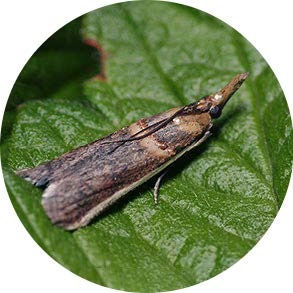


| Latin Name | Etiella zinckenella |
| Common Name | Pod borer moth |
| Biology | Adults are nocturnal, exhibiting phototaxis, and lay eggs on flower buds, petals, or young pods of Fabaceae plants. Larvae bore into pods and seeds, causing pod collapse and seed consumption, significantly reducing legume yields. This species completes 4–5 generations annually, overwintering as mature larvae spin cocoons in soil. |
| Damage | Primary hosts include cowpea, common bean, hyacinth bean, and soybean. |
| Distribution Regions | Tropical and Subtropical regions |
| Monitoring | Pheromone lures mimic natural sex pheromones to attract male insects into specialized traps for population monitoring and suppression. As a core IPM component, monitoring enables early risk detection and targeted control. Mass trapping reduces mating opportunities to curb offspring populations. Protocols: ●Use only with matched traps. ●15-45 traps/hectare,replace/replenish every 4-6 weeks. ●Wear gloves or wash hands with detergent when switching lure types. ●Refer to trap-specific hanging instructions. |
| Recommended Traps | Delta Trap, Wing Trap |

Comparta su información de contacto para recibir soluciones de feromonas de precisión. En caso de que nuestra cartera existente no se adapte de forma óptima, nuestro equipo de química sintética iniciará el desarrollo personalizado, desde el diseño de la estructura molecular hasta la producción a escala.